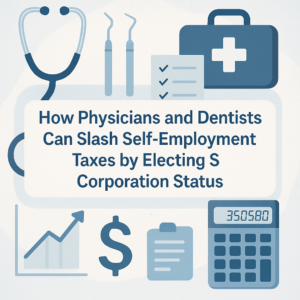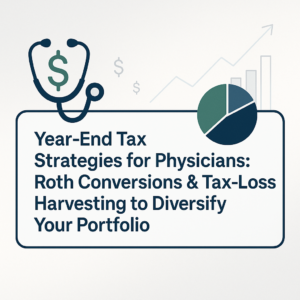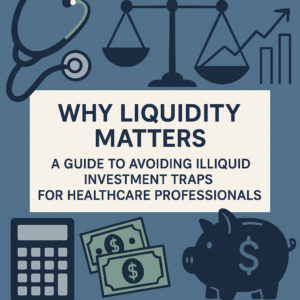In recent years, even as interest rates have surged, home prices have remained surprisingly resilient. For young healthcare workers such as physicians, doctors, dentists, pharmacists, physical therapists, and psychologists, understanding why this is happening is crucial. Whether you’re considering purchasing a home, selling your existing one, or simply looking to learn more about the real estate market, this guide will help you understand the dynamics at play.
The Current State of the Housing Market
The resilience of home prices in the face of high interest rates has puzzled many. Typically, higher interest rates lead to decreased affordability for potential homebuyers, which should result in lower demand and ultimately a decline in home prices. However, various factors have kept home prices stable despite increasing interest rates.
Over the past few decades, the U.S. housing market has experienced significant fluctuations. The early 2000s saw a housing boom and bust culminating in the 2008 financial crisis, which significantly reduced home prices. The market took several years to recover, helped by regulatory reforms and economic policies aimed at encouraging sustainable lending practices.
In the decade following the Great Recession, home prices saw substantial appreciation. Factors such as low interest rates, increased demand, and limited housing supply contributed to this upward trend. For young healthcare professionals, many of whom are considering homeownership for the first time or looking to upgrade their current living situations, understanding housing affordability and market dynamics is particularly relevant today.
The Supply Side: Limited Housing Inventory
A critical factor in sustaining high home prices is the limited housing inventory. High interest rates make moving less attractive for existing homeowners, leading to constrained supply. Here’s why:
1. Lock-In Effect:
Many homeowners have locked in mortgage rates significantly lower than current levels. Selling their home and purchasing a new one would mean taking on a much higher mortgage rate. This discourages moving, leading to fewer homes being put on the market, which keeps supply low and prices high.
2. Construction Slowdowns:
The construction of new homes has been slow. Factors include rising material costs, labor shortages, and regulatory hurdles. This stagnation in new housing stock exacerbates the supply issue.
3. Pandemic Aftereffects:
The COVID-19 pandemic had a pronounced impact on the supply chain and housing market. Builders faced increased costs and delays, while homeowners were less likely to list their properties amidst economic uncertainty. The effects linger, contributing to current inventory limitations.
The NIMBY Effect: Protecting Home Values
The NIMBY phenomenon also plays a significant role in maintaining high home prices. Here’s how:
1. Blocking Development:
Existing homeowners often resist new housing developments in their communities, fearing that an influx of new units could decrease their property values. This resistance manifests through zoning laws and local regulations that make it difficult for developers to obtain permits for additional housing.
2. Asset Protection:
Many U.S. households have a significant portion of their wealth tied up in their homes. Given this high stake, there’s a vested interest in maintaining home prices. This collective resistance to new development preserves property values but limits availability, fueling higher prices.
Economic Scenarios Impacting Home Prices
Several economic scenarios could potentially impact home prices. It’s essential for young healthcare professionals to consider these factors before making real estate decisions:
1. Interest Rate Fluctuations:
While high interest rates currently inflate mortgage payments, future interest rate cuts could lead to increased affordability and a subsequent rise in demand. Conversely, if rates continue to rise, housing affordability could further decline, putting downward pressure on prices.
2. Economic Downturns:
Economic recessions can lead to job losses and reduced incomes, resulting in decreased demand for housing. Homeowners struggling to make mortgage payments might be forced to sell, flooding the market with supply and driving prices down. This scenario was evident during the 2008 financial crisis.
3. Inflation:
Persistent inflation erodes purchasing power, making it more challenging for potential buyers to save for down payments and afford monthly mortgage payments. However, inflation also increases asset values, including real estate, which can sustain high home prices to some extent.
4. Demographic Shifts:
Changes in population dynamics, such as an aging population or migration patterns, can influence housing demand. For example, cities witnessing an influx of young professionals might experience heightened demand, while areas with declining populations could see decreased demand and falling prices.
Historical Context: Lessons from Past Housing Crashes
Understanding historical trends provides valuable lessons for the present situation. The U.S. has experienced significant housing market fluctuations over the past century, with notable crashes that offer insights into future scenarios.
1. The Great Depression (1929-1939):
The housing market crashed in the late 1920s, leading to a dramatic drop in home prices. The market took years to recover, largely influenced by broader economic policies and changing public sentiments.
2. 1980s Savings and Loan Crisis:
The deregulation of the savings and loan industry led to risky lending practices. When the bubble burst, many financial institutions failed, and home prices plummeted, particularly in overbuilt markets.
3. 2008 Financial Crisis:
The most recent major housing crash, the 2008 financial crisis, was precipitated by high-risk mortgage lending and financial speculation. Home prices fell sharply, leading to widespread foreclosures and a prolonged economic downturn. This event reshaped lending practices and regulatory frameworks, which have helped bring stability to the market today.
What Could Change the Landscape?
Several potential changes could significantly alter the housing market’s trajectory:
1. Policy Changes:
Government interventions, such as easing zoning laws and offering incentives for new developments, could increase housing supply and stabilize or reduce home prices. Policies aimed at increasing affordable housing stock could also have a profound impact.
2. Market Interventions:
Central bank policies and economic stimulus measures can influence interest rates and lending practices. Future interest rate cuts could stimulate demand, while regulatory changes might impact buyer and lender behaviors.
3. Technological Advancements:
Innovations in construction technologies, such as 3D printing and modular homes, could reduce building costs and increase housing supply. Advances in real estate technology might also streamline buying and selling processes, enhancing market efficiency.
4. Economic Shifts:
Broader economic trends, such as changes in employment patterns due to remote work or shifts in consumer behavior, could redefine housing demand and influence market dynamics.
Conclusion: Navigating the Unpredictable Housing Market
As young healthcare professionals, you may face unique challenges and opportunities in the current housing market. Here are some key takeaways and final thoughts to help you navigate these complexities:
1. Stay Informed:
Keep abreast of market trends and economic indicators. Understanding the factors influencing home prices will empower you to make informed decisions.
2. Seek Professional Advice:
Consult with financial advisors, real estate experts, and mortgage professionals to gain personalized insights and guidance. Their expertise can help you navigate potential pitfalls and identify opportunities.
3. Evaluate Your Financial Position:
Assess your financial situation, including your ability to handle mortgage payments, property taxes, and maintenance costs. Ensure that you have a robust financial plan in place before making any significant real estate decisions.
4. Consider Long-Term Goals:
Reflect on your long-term career and personal goals. Your housing needs may evolve with your career as a healthcare professional, so consider factors such as job stability, potential relocations, and family planning.
5. Explore All Options:
Evaluate different neighborhoods, property types, and financing options. Being open-minded and flexible can help you find the best fit for your needs and budget.
6. Be Prepared for Market Fluctuations:
Understand that real estate markets are cyclical and subject to change. Having a contingency plan and being prepared for potential market downturns will help you weather any uncertainties.
7. Practical Steps:
- Save for a substantial down payment to improve your borrowing power and reduce mortgage costs.
- Regularly review your credit report and work on improving your credit score, which can significantly impact your mortgage rates.
- Stay updated on changes in real estate laws and tax incentives that could benefit you as a homebuyer or seller.
By understanding the complexities of the housing market and staying proactive in your decision-making, you can successfully navigate the real estate landscape and make choices that align with your financial goals and career. The interplay of interest rates, supply constraints, and economic factors will continue to shape home prices, but with the right knowledge and approach, you can find opportunities even in unpredictable markets.






